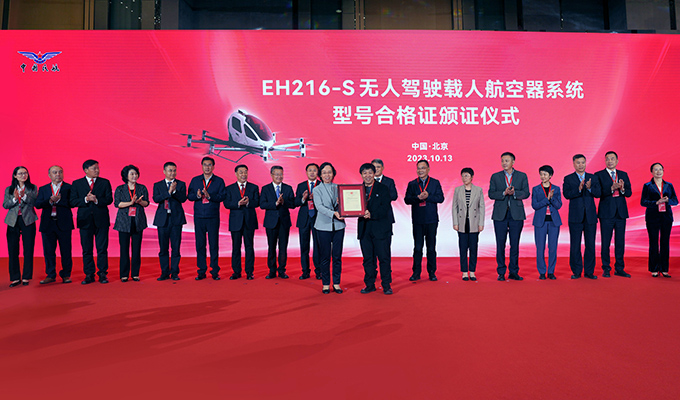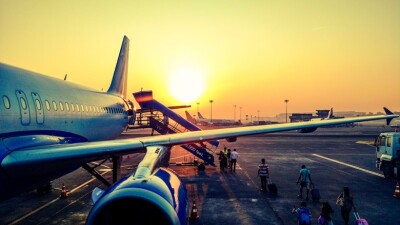On October 13, the Civil Aviation Authority of China (CAAC) issued a Type Certificate (TC) to the advanced air mobility (AAM) aircraft known as the EHang 216-S, an autonomous air taxi designed and manufactured from scratch by the Chinese company EHang (NASDAQ: EH).
The announcement is significant in many ways but, to our knowledge, this is the first time that a civil aviation authority (CAA) has issued a TC to a non-conventional aircraft such as an AAM.
 On September 20, we published an article in which we forecasted that, given the universalization of designs and manufacturing facilities around the world, it was a matter of time before an CAA, other than the FAA, EASA, and ANAC would issue TCs to non-conventional aircraft. Now, less than a month later, that forecast has turned into a reality in China. But how difficult is it to obtain a TC in the USA and Europe?
On September 20, we published an article in which we forecasted that, given the universalization of designs and manufacturing facilities around the world, it was a matter of time before an CAA, other than the FAA, EASA, and ANAC would issue TCs to non-conventional aircraft. Now, less than a month later, that forecast has turned into a reality in China. But how difficult is it to obtain a TC in the USA and Europe?
If we review the FAA guidelines for type certification, we find that these processes are lengthy and expensive. Imagine a federal agency (FAA) authorizing a private company (Boeing) to sell an aircraft that can carry hundreds of passengers over thousands of miles of open ocean.
That is why, traditionally, only the big aircraft manufacturers have been able to afford the cost in terms of money and personnel of these TCs. The AAM and UAV industry have been lobbying the FAA for years to lower the threshold for small non-traditional aircraft arguing that these smaller vessels will never carry hundreds of passengers or fly thousands of miles.
Before we specify the tests that the EH216-S was subjected to, a word of caution is warranted as the CAAC is not publicly advertising its policies regarding transparency of the certification process, a clear definition of the TC rules, any special conditions or means of compliance and the requirement to have public comment and input.
According to the announcement, “the vehicle underwent extensive laboratory, ground, and flight tests at professional aviation laboratories and test sites across multiple locations in China. These tests included but were not limited to main material performance, structural strength, flame resistance, crashworthiness, gas toxicity, environmental conditions of equipment and systems, software simulation, data links, ground control stations, overall system functionality, electromagnetic compatibility, flight performance and flight stability characteristics.”
Both the FAA in the US and EASA in Europe have extensive published requirements to obtain TCs and have been doing it for years. This transparency allows for easy bilateral acceptance of the certification of traditional crewed aircraft. Will this bilateral acceptance of each other’s certification be extended to China’s aircraft? This is not a given and we are convinced that all CAAs around the world will demand to see the results of the tests in order to validate the EH216-S design to be used in their respective NAS.
The CAAC announcement also mentioned that “the validation process scrutinized components, equipment, and the entire aircraft for prefabricated defects, faults and interferences during both laboratory experiments and flight trials. With that, the safety, airworthiness, performance, functionality, usability and reliability of the EH216-S have been thoroughly and rigorously validated through over 500 specific test items, more than 40,000 test flights for adjustments, and formal conformity validation tests encompassing 65 major categories and over 450 individual test items. CAAC’s experience and expertise in conducting the EH216-S airworthiness certification provides a significant reference for the global aviation industry and plays a pivotal role in shaping regulations, standards, and norms for unmanned eVTOL airworthiness certification, serving as a crucial benchmark for the industry worldwide.”
Without a deep scrutiny of their processes and a hard look at the data, we cautiously celebrate the first TC of an uncrewed air taxi, but caution that this TC might not be usable in other geographies until we can corroborate that it was conducted and issued according to international standards. Now it remains to be seen if other non-Chinese manufacturers will seek certification in that country and if they will be given the same preferential treatment.















Comments